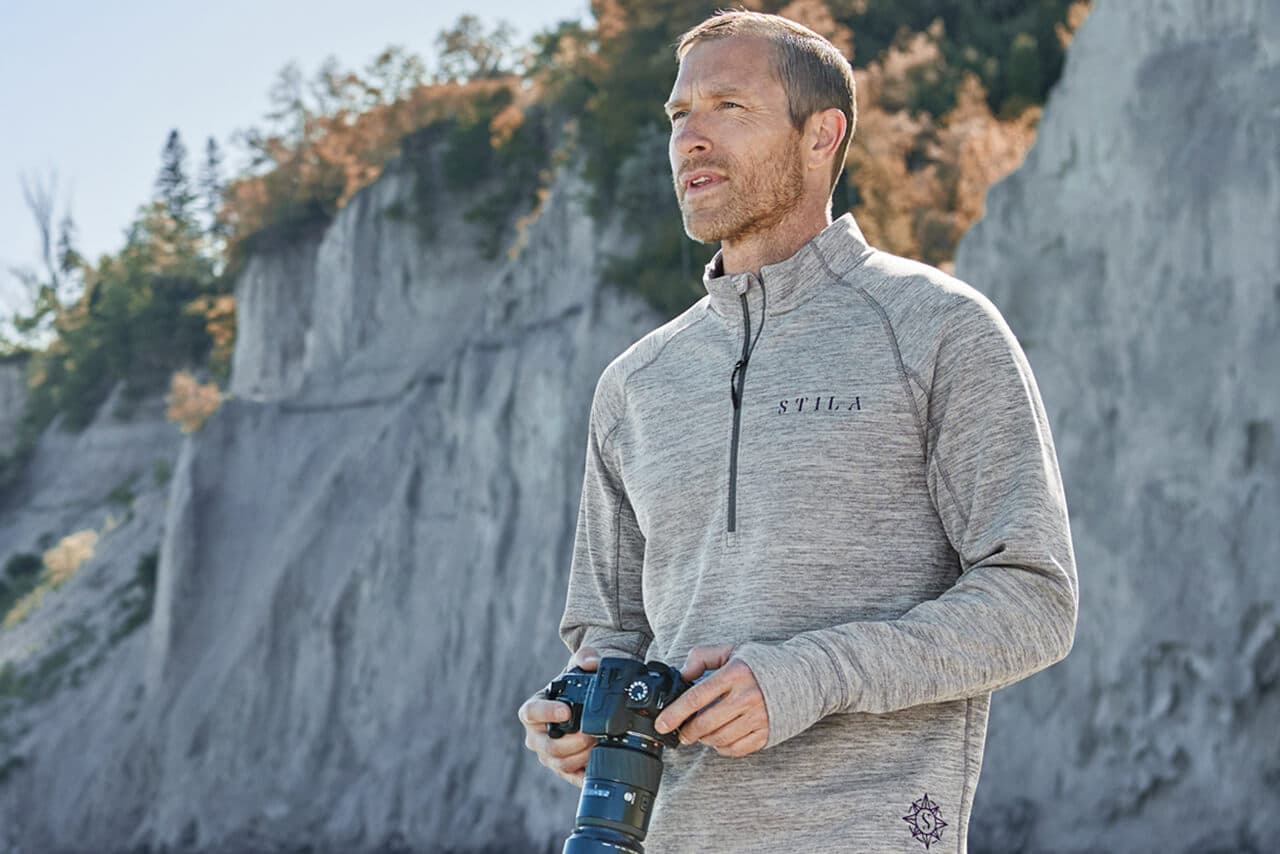Is Branded Clothing Really Better Because of the Fabric?
Is Branded Clothing Really Better Because of the Fabric?
Blog Article
The Significance of Lasting Apparel: How It Impacts the Setting and Your Closet
Lasting clothing is increasingly acknowledged for its important role in decreasing the environmental impact of the fast garment industry. By concentrating on green products and honest production methods, it deals with pressing ecological worries. This change not just benefits the earth but likewise influences consumer choices, resulting in an extra thoughtful method to wardrobe monitoring. Recognizing these dynamics raises important inquiries concerning style's future and individual obligation in shaping it.
The Environmental Impact of Quick Style

Advantages of Sustainable Materials
Sustainable products supply considerable advantages, particularly through environment-friendly fabric choices that lessen environmental harm. These products additionally show sturdiness and long life, lowering the need for frequent replacements. Because of this, they add to a much more sustainable fashion business and advertise accountable consumer behavior.
Eco-Friendly Textile Selections
While the garment industry has actually long been related to quick patterns and environmental injury, the rise of green fabric selections provides a transformative possibility. Sustainable products such as natural cotton, hemp, and Tencel have acquired popularity as a result of their lower ecological impact. These materials are usually created without damaging pesticides and require less water, lowering their carbon impact - Branded Clothing. In addition, several environment-friendly textiles are biodegradable, contributing to a circular economic climate by lessening waste. Selecting sustainable products not only sustains environmentally liable techniques yet also promotes healthier communities. As consumers become extra aware of their acquiring power, the demand for environmentally friendly textiles urges brands to innovate and adopt more sustainable production approaches, ultimately profiting the planet and future generations
Longevity and Long Life Benefits
Many customers are significantly recognizing the sturdiness and longevity advantages of sustainable materials in their clothing choices. Unlike traditional materials, lasting products such as organic cotton, hemp, and recycled polyester are crafted to stand up to deterioration, causing garments that last longer. This decreased regularity of substitute not just saves consumers money over time but additionally decreases waste generated by quick style. Additionally, sustainable apparel commonly utilizes eco-friendly manufacturing methods that enhance fabric toughness, adding to a decrease in the total carbon footprint. By purchasing durable apparel, customers can cultivate a much more sustainable wardrobe while taking pleasure in top notch pieces that maintain their aesthetic and capability gradually. Durability and longevity stand as crucial advantages of choosing lasting products.
Lowering Waste Via Sustainable Practices
Decreasing waste in the fashion business can be accomplished via ingenious methods such as upcycling and repurposing materials. In addition, taking on minimalist closet strategies encourages consumers to prioritize top quality over amount, ultimately reducing garments consumption. Together, these strategies add substantially to a more lasting apparel model.
Upcycling and Repurposing Products
Upcycling and repurposing products have actually become innovative strategies in the fashion business, transforming disposed of fabrics right into important new items. This strategy not only lessens waste but also encourages creative thinking and uniqueness in clothes design. By taking old garments and materials, designers can produce one-of-a-kind items that show individual design while decreasing the demand for new resources. Furthermore, upcycling commonly needs less power and water contrasted to typical manufacturing processes, substantially reducing the ecological footprint of style. As consumers become more knowledgeable about sustainability, the appeal of upcycled garments remains to increase, advertising a round economy. Eventually, these methods add to an extra sustainable future, where fashion prioritizes environmental health over fast production and consumption.

Minimalist Closet Methods
As individuals significantly look for to decrease their ecological influence, embracing minimal closet methods has actually gained grip as an efficient strategy to sustainable style. These strategies highlight high quality over quantity, motivating customers to curate a smaller collection of flexible, durable clothing. By focusing on ageless items that can be blended and matched, people can minimize the regularity of acquisitions and eventually reduce waste.Additionally, minimalism promotes conscious consumption, prompting customers to show on the ecological and moral effects of their options. This approach not just cultivates a much more sustainable lifestyle however also simplifies everyday decision-making concerning attire. As people embrace minimal concepts, they contribute to a style society that values sustainability and liable consumerism, eventually bring about a much more eco-conscious culture.
The Duty of Moral Labor in Lasting Style
While numerous consumers are progressively familiar with the environmental effects of their clothing selections, the importance of honest labor methods in sustainable style can not be neglected. Moral labor incorporates reasonable incomes, safe working problems, and respect for employees' civil liberties, forming the foundation of accountable style production. Brand names that prioritize ethical labor not just uplift communities yet also set a standard for liability in the industry.Moreover, the integration of honest practices fosters transparency, allowing consumers to make enlightened options regarding their purchases. This practice contrasts dramatically with rapid style's unscrupulous labor versions, which usually focus on earnings over people. By supporting firms devoted to ethical labor, customers contribute to a system that values human self-respect along with ecological sustainability. Subsequently, moral labor is not simply an add-on; it is vital to the wider mission of sustainable fashion, making certain that the quest for eco-friendliness does not come with the expenditure of human legal rights.
The Effect of Sustainable Clothing on Carbon Emissions
Lasting apparel has the possible to significantly decrease carbon discharges related to the style sector. Typical garment manufacturing adds significantly to greenhouse gas emissions, largely as a result of energy-intensive production procedures and the use of non-renewable resources. On the other hand, lasting fashion concentrates on environmentally friendly products, such as natural cotton or recycled fibers, which usually call for less power to produce.Moreover, sustainable brands tend to take on more effective manufacturing techniques, decreasing waste and lowering general emissions. By prioritizing resilience and timeless style, sustainable clothing motivates consumers to get much less often, further decreasing the carbon impact useful content connected with overconsumption.Additionally, many sustainable brand names are committed to transparency in their supply chains, making it possible for customers to make enlightened choices that straighten with their values. Eventually, changing in the direction of sustainable clothes can cause a significant decrease in carbon discharges, contributing to a healthier earth and a more sustainable future for the fashion industry.
Supporting Local Economies With Sustainable Options
The shift toward sustainable clothing not just addresses environmental concerns however likewise significantly benefits regional economies. By selecting lasting fashion, consumers usually sustain regional artisans and little businesses, improving community resilience. These business normally operate on a smaller sized scale, prioritizing craftsmanship and moral practices over mass production.Investing in locally made sustainable clothes fosters work production and promotes economic development within neighborhoods. As consumers end up being extra familiar with the ecological influence of their purchases, they significantly look for products that mirror their worths. This need urges neighborhood manufacturers to embrace sustainable techniques, adding to a circular economy.Moreover, sustaining regional organizations minimizes transport exhausts, straightening with eco-conscious consumer behavior. The interconnectedness of lasting apparel and neighborhood economic climates underscores the vital function that specific selections play in promoting both ecological and economic wellness. By cultivating these regional links, areas can prosper while also working towards an extra sustainable future.
Transforming Your Storage Room: Tips for a Lasting Wardrobe
As individuals seek to minimize their environmental impact, transforming a wardrobe right into a sustainable closet becomes a necessary action. One efficient technique is to review existing clothes, keeping only things that are used frequently and that straighten with sustainability goals. Prioritizing quality over quantity is crucial; buying long lasting pieces from environment-friendly brand names can significantly reduce waste.Additionally, incorporating used items can revive a closet while lessening environmental damages. Organizing garments swaps with buddies or contributing unused items can even more advertise sustainability.When purchasing, people should look for materials that are organic, recycled, or eco-friendly, and stay clear of quick fashion merchants - Branded Clothing. Practicing mindful usage by thoughtfully considering each purchase can contribute to a more sustainable way of life. By applying these tips, one can produce a closet that reflects personal design while supporting environmental stewardship
Frequently Asked Concerns
How Can I Determine Sustainable Apparel Brands?
To recognize lasting garments brands, one need to investigate materials utilized, inspect for accreditations like Fair Profession, and analyze the brand's transparency about their manufacturing processes, labor methods, and environmental impact, guaranteeing Full Article honest and environment-friendly practices are prioritized.
What Are the Costs Linked With Lasting Style?
The expenses connected with lasting style can vary considerably. Greater manufacturing expenses, ethical sourcing, and green products frequently bring about raised retail prices, which may prevent some customers while attracting eco mindful consumers.
Can Sustainable Apparel Be Stylish and fashionable?
Sustainable clothing can undoubtedly be fashionable and stylish. Designers increasingly prioritize cutting-edge products and ethical production methods, confirming that fashion and sustainability can exist side-by-side. Consumers now have diverse choices that mix visual appeals with ecological consciousness.
How Does Laundering Clothing Affect Their Sustainability?
Cleaning garments greatly influences sustainability by consuming water and energy, adding to contamination, and triggering microplastic release. Regular cleaning can weaken materials, shortening their life expectancy and raising the demand for substitutes, inevitably worsening ecological concerns.
What Is the Life-span of Sustainable Clothing Compared to Fast Style?
The life expectancy of sustainable clothes generally exceeds that of quick fashion items, often enduring numerous years because of top quality materials and workmanship. On the other hand, rapid style garments may weaken swiftly, requiring more frequent replacements. Sustainable clothes is progressively recognized for its vital function in minimizing the environmental impact of the rapid fashion market. While lots of customers are increasingly conscious of the ecological repercussions of their apparel selections, the value of honest labor techniques in webpage lasting style can not be ignored. Branded Clothing. Lasting clothes has the potential to considerably reduce carbon emissions associated with the fashion market. In contrast, lasting style focuses on eco-friendly products, such as organic cotton or recycled fibers, which usually require less energy to produce.Moreover, sustainable brand names have a tendency to embrace more reliable production practices, minimizing waste and decreasing overall exhausts. By prioritizing longevity and timeless style, lasting clothing urges consumers to buy much less frequently, additional minimizing the carbon footprint linked with overconsumption.Additionally, many sustainable brand names are devoted to transparency in their supply chains, making it possible for customers to make informed options that line up with their values
Report this page